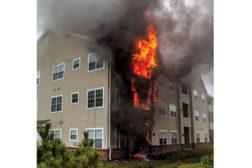Jeff Bishop
Jeff Bishop, a ’67 graduate of the University of Georgia, is a 37-year veteran of the cleaning/restoration business. He has authored 13 books and many articles on technical subjects and is vice-president of two active restoration companies in south Georgia. He is an international instructor and speaker and serves as technical advisors and expert witness for industry organizations and companies worldwide.
ARTICLES
Get our new eMagazine delivered to your inbox every month.
Stay in the know on the latest disaster restoration and remediation trends.
SUBSCRIBE TODAY!Copyright ©2022. All Rights Reserved BNP Media.
Design, CMS, Hosting & Web Development :: ePublishing

